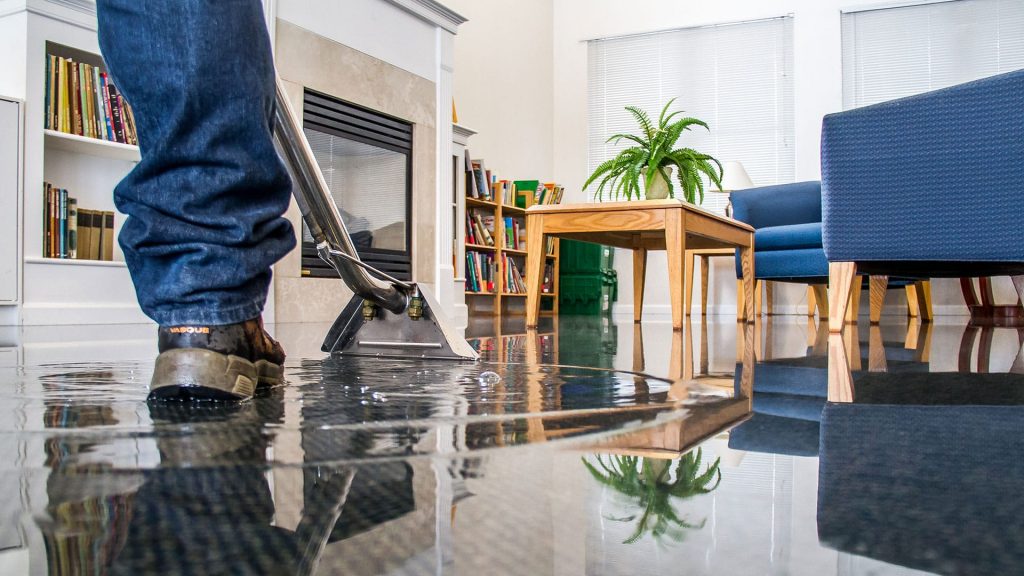Water Damage Safety Tips

Whether it’s the result of a leaky appliance, burst pipe, or destructive storm system, even a small amount of unwelcome water in your home can lead to thousands of dollars in damages within hours. We hope the information provided here will help you understand where water damage in your home is likely to start and how you can possibly identify minor issues before they become major problems.
6 Common Causes of Water Damage in Homes
- Plumbing-related losses, e.g., frozen or burst pipes
- Drain line issues, e.g., blockages or breaks
- Roof leaks
- Water heater failures
- Sump pump overflows and municipal sewer backups
- Appliance-related breakdowns
Telltale Signs You May Have a Water Leak or Damage in Your Home
- Trickling, dripping, or running water sounds
- Musty odors
- Cracking, peeling, or bubbling paint or wallpaper
- Water stains on ceilings or walls
- Mold or mildew growth
- Warped Floors or ceilings
- Puddles under or around pipes
10 Steps You can Take to Prevent Water Leaks and Damage
With the following list in hand, take a walk around your home. If you answer no to one or more of the questions below, it may be wise to contact a licensed professional to help you better protect your property from water damage.
- Protect the Pipes-Are all pipes on external walls or in unheated places insulated? Can you relocate vulnerable pipes to heated spaces? Do you shut off your water supply to exterior water spigots and drain them prior to winter months? Have you upgraded to frost-free exterior spigot lines?
- Seal Any Gaps-Are all cracks and holes sealed, especially those where water pipes and electrical cords come in and out? Are all rubber seals and hoses connected to appliances secure with no signs of wear and tear?
- Maintain Appliances-Is grime or buildup removed from the refrigerator coil, dishwasher filter, and washing machine drain regularly? Did a licensed professional install appliance water and gas lines? Do you know when your hot water heater warranty expires? Have you considered changing the anode rod?
- Clear Gutters and Downspouts-Are leaves and debris scooped out and is water flow good? If you spotted a leak, has it been fixed with waterproof sealant? Are all gutter hangers firmly attached?
- Inspect the Roof-Do you frequently check your roof for loose or missing shingles and damaged soffits? Are tree limbs cut back from the roof’s surface? Have you checked for signs of wear at the roof connection point for chimneys and vent pipes?
- Safeguard Septic and Sump Pumps-Does your system have a backflow prevention valve to protect against overflow or clogs? Do you have a backup sump system or alternate power source if electricity gets knocked out?
- Install Sensors and Alarms-Are leak detectors near all water-use appliances, under sinks, and in bathrooms, crawl spaces, and the basement? Do you have temperature change alarms to detect sudden drops? Have you checked with your home security system provider to see if you can add these helpful sensors?
- Landscape Smartly-Have you made “rain gardens” so water runs off the lawn and away from the foundation? Has your lawn been graded properly to ensure water runs away from the building? Are there trenches between your home and nearby plant beds?
- Know How to Stop Water Flow-Does everyone in your home know the location of the main water shutoff valve, and is it easily accessible? If your gate valve looks corroded, have you considered having a licensed plumber change it to a ball valve style? Is your shutoff valve connected to leak and temperature sensors?
- Have an Away-From-Home Plan-Do you shut off water supply to appliances while traveling? If there is a water emergency while you are on a trip, does a family member, friend, or local licensed professional have access to your home? If you’re traveling for an extended period or relocat- ing temporarily for the winter season, do you consider shutting off your heating system and draining your pipes?
Click below to view a copy of the article
